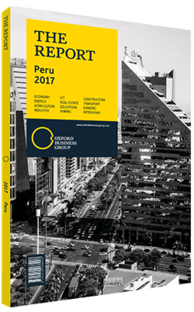Lizardo Helfer, General Manager, Cosapi: Interview

Interview: Lizardo Helfer
In what ways should the public-private partnership (PPP) structure be improved to encourage more private sector investments?
LIZARDO HELFER: Peru needs multiple infrastructure projects, and PPPs are a way for the public and the private sector to establish which projects to prioritise. The private sector is very keen to take part in these sorts of associations. In fact, the vast majority of the major construction companies have partnered with the government in recent years to develop projects, and regard them as an intelligent way for the government to develop, operate and maintain its infrastructure projects for a determined period of time. PPPs allow the country’s assets to be taken care of in the medium and long term. The PPP model looks for ways to develop the highest number of projects in the shortest period of time. It allows foreign capital to finance large projects without incurring into cost or time extensions. However, the framework is not exempt from challenges. There are issues with expropriations, interferences and bureaucracy that prevent deadlines from being met.
How can project financing of large-scale infrastructure projects be enhanced?
HELFER: The drop in mineral prices is a reality and has resulted in less income for the country through royalties to finance projects. The country’s challenge is to achieve other types of development through agriculture and transportation, among others; however, the relevance of the mining sector in the economy will always be paramount.
In order to further enhance financing for largescale projects, the country should choose a model of self-sustainable PPP projects, as the private counterpart takes the whole risk of the project development in exchange for charging a tariff or toll for the usage of the facilities after completion of the project. We must take into account, however, that large infrastructure projects are limited, and thus the government needs to play a leading role in prioritising and deciding what projects are necessary for the country’s development.
What should the new administration take into consideration when targeting foreign investors, and where should efforts be focused?
HELFER: Initially, the efforts should be focused on unlocking projects that are halted, as the lack of development in such projects is one of the main reasons behind the significant decrease in private investments. If the government is able to achieve this, private investments will flow again into large projects.
How far will the trans-border integration corridor help to improve and encourage transportation between Peru and its neighbours?
HELFER: This corridor is very important. The idea behind the corridor, which will connect Chile, Brazil, Peru and Bolivia by road, is to increase interconnectivity between Peru and its neighbours. In this regard, any road that enables transportation between two or more nations will enhance trade and improve the livelihood of the people living near these roads.
How important is it for Lima and other major cities in the country to improve transportation?
HELFER: It is a necessity as Lima is a city with obsolete roads. There are millions of people who commute on a daily basis between the north and south of the city. Prior to the Metro, it would take them more than two hours per trip to do so. Metro Line 1 has decreased commuting times, therefore improving the quality of life of millions of people. Many citizens are now able to have a better work and leisure balance. University students have more time to study, thus opening more opportunities for them. Building Metro Lines 2 and 3 will add onto these positive changes.
You have reached the limit of premium articles you can view for free.
Choose from the options below to purchase print or digital editions of our Reports. You can also purchase a website subscription giving you unlimited access to all of our Reports online for 12 months.
If you have already purchased this Report or have a website subscription, please login to continue.

